OpenYour Eyes - international training course


Open Your Eyes képzés
A tréner csapat is nemzetközi volt, magyar, szlovák és lengyel. A segítő csapat magyar volt.
A munka nyelv angol.
A részletes beszámoló is angol nyelven készült és angol nyelven tesszük fel a weblapunkra.
Ha valakinek segítségre van szüksége a fordításban, az írjon a mailsubvenio@gmail.com címre és segítünk.
Summary of our project
Description of activities
The aim of the training was to encourage people to involve culturally diverse groups into their activities. We have discovered that people think about this topic in a really narrow way or that they are afraid of risk that it brings according to general opinion. We have decided to change that and give them platform to discuss, experience, learn and exchange.
Project was based on the logical line Look open your eyes see practice ready for diverse future?! And was supposed to bring our participants from the stage of knowing something or just observing the environment through getting to know all sides and “faces” of diversity until the moment where accept for looking the would also see and understand it.
In order to achieve this aims we have used bunch of various methods. We have tried to compose the programme according to the needs of our participants. We constructed training allowing them to work in smaller groups, individually and on the forum. We have also paid attention to the balance of methods that would allow them to discuss, express their opinions and experience. Trainers were giving unnecessary theoretical inputs whenever need like this appeared. Our methodology was based on different techniques such as:
Work in groups
Individual work
Discussions
Presentations
Self reflection
Theatre scenes
Written methods
Field visit
Media methods
Involvement of participants
Our participants were selected by certain National Agencies on the base of the application form that has been created by the trainer’s team. Application was created in the way that allowed to pick people really motivated in working with culturally diverse groups, people who were not only interested in the topic but also those who really had a need to get to know how to work, cooperate and moderate work with/in such environment.
Trainers had sent out the application to Hungarian NA which has distributed it to all the NA`s after first stage of pre-selection, also trainers had a chance to evaluate candidates. This part of preparation was also a space for participants to speak about their internal expectation which helped created final version of the programme.
Ever since the group of participants was chosen we have been in constant contact. This way we have involved participants into further programme planning process. Via website created for this training we have been also giving them some tasks. Participants were asked to send their pictures and upload descriptions of their activities and organisations. They have also been sent a form to fill in which trainers were collecting information useful for the training.
During the training participants were actively participating in all workshops but they`ve been also asked to run some activities (starting from short energisers till moderating some discussions). We have foreseen parts where all participants had a space for themselves to speak about their experiences, presenting their organisations etc. during the field visit participants were divided into smaller groups which task was to examine the potential of diversity of Bezenye and presenting it in a creative way.
When it comes to follow up, during the training several actions were planned so we are monitoring now where it will bring our participants – but we do hope to diversity in practice!
Intercultural dimension
We had no serious communicational problem. One of trainer didn’t speak fluent English but she has put a lot of effort in improving it and all the participants had no problems with communicating with her. It was an additional advantage even as among our participants we also had people who didn’t speak English fluently. Additionally this was giving an extra dimension to the training. Our working language was English but we have been using methods that allowed everyone to express themselves freely no matter their language level.
We were also facing one internal conflict between some participants but since it`s been based on personal dimension we had managed to solve it in a good way.
Our participants had plenty of opportunities of experiencing intercultural education in “learning by doing process”. This was assured not only thanks to variety of the methods that were tackling the topic of intercultural education but also free and non formal time gave a lot of space for developing mutual understanding. Our group was various itself. Many conversations were requiring diplomatic attitude and respecting other people’s value and opinions – also because most of time it was connected with a very delicate topics like belonging to minorities or talking about handicapped people. Especially workshops that were based on work in smaller groups required working out fruitful communication and establishing internal rules for cooperation – regarding all differences that our participants were representing and facing.
Most of the parts of the programme were tackling the topic of intercultural education but mainly those that were actively involving them in cooperation and team work were giving the biggest space for experiencing intercultural education in practice.
Impact
Participants in the training “Open your eyes”were all in direct or indirect contact with young people or youth work. We hope they will act as multipliers and that they will spread and share the knowledge they learned into their daily work and in their local community. We tried to show them how benefitial and aspiring is the human diversity in youth work. So we hope our training will be beneficial for some people with less opportunities who will be involved in local youth work but also in some concrete projects, for exemple youth exchanges.
One day in our training we had field visit in a small village Bezenye. The population of 1600 consists largely of a Croatian-speaking community, with some ethnic Hungarians, Slovaks and Germans. We spend there half day. Our participants had possibility to see one youth centre and then they had task to examine the potential of cultural diversity in this village using some creative tool. They have been working in small groups together with some local people. After we had nice evening together, the local community prepared for us typical food , music and dances. We will send to the Bezenye the final presentations that the small groups prepared about this village.We exchanged contacts together and we hope that there will be some future coopeartion.
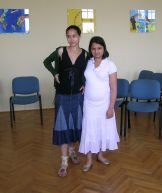
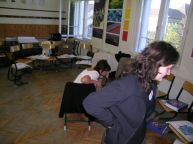
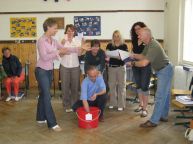
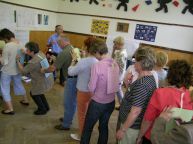
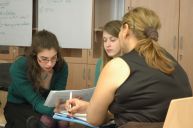


 Küldje el ezt a cikket barátjának, ismerősének!
Küldje el ezt a cikket barátjának, ismerősének! Nyomtatható változat
Nyomtatható változat